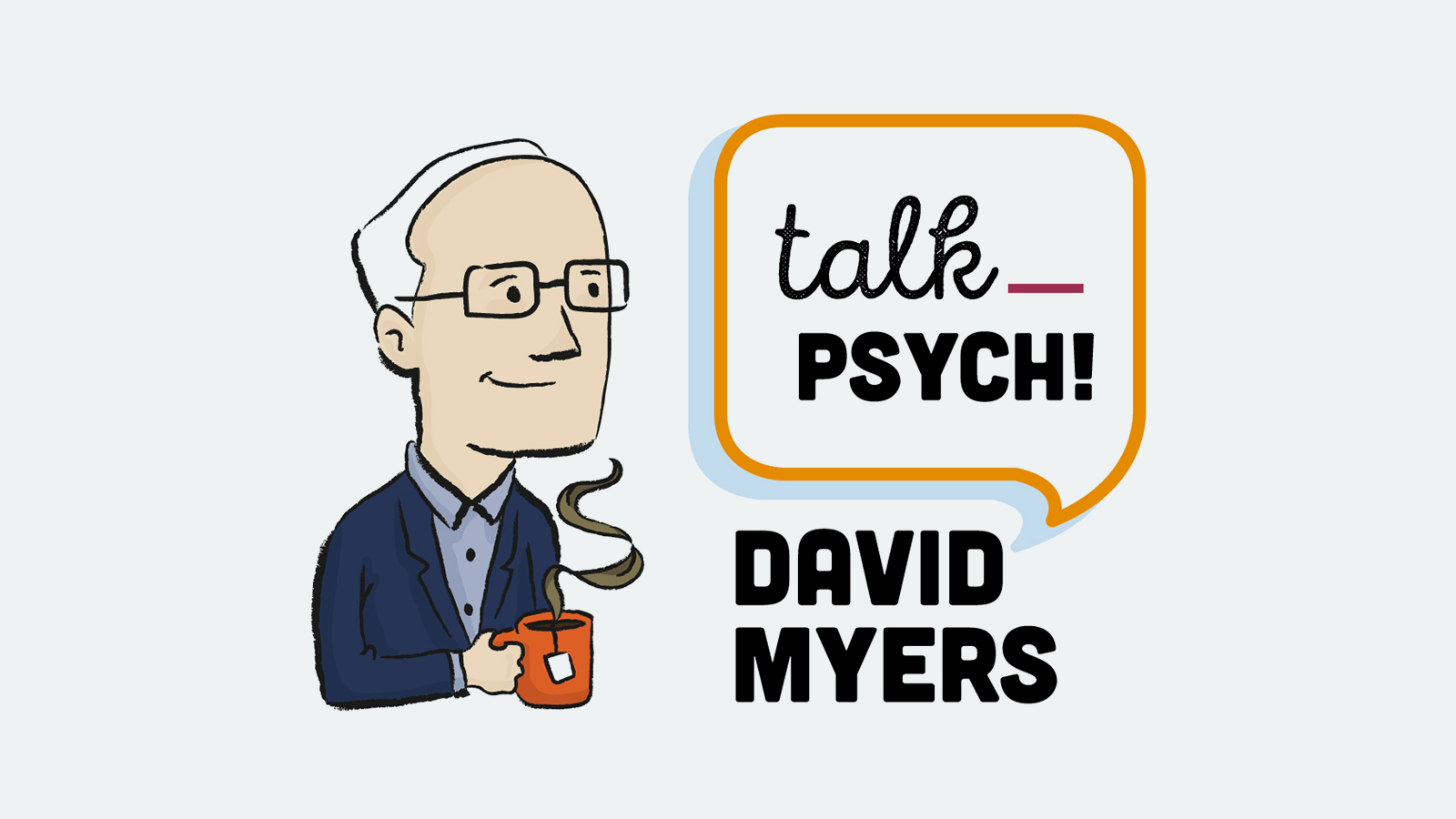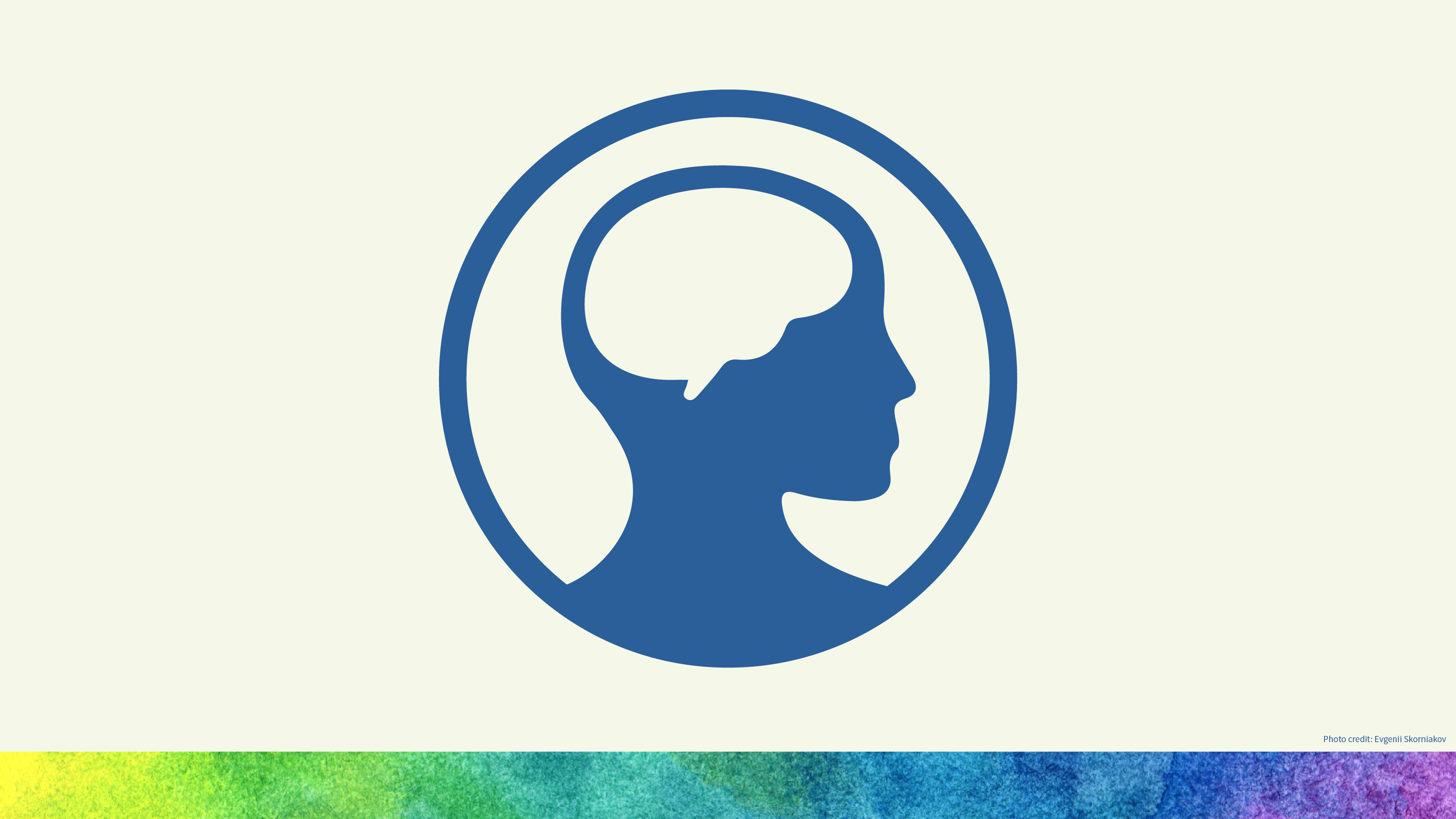-
About
Our Story
back- Our Mission
- Our Leadershio
- Accessibility
- Careers
- Diversity, Equity, Inclusion
- Learning Science
- Sustainability
Our Solutions
back
-
Community
Community
back- Newsroom
- Discussions
- Webinars on Demand
- Digital Community
- The Institute at Macmillan Learning
- English Community
- Psychology Community
- History Community
- Communication Community
- College Success Community
- Economics Community
- Institutional Solutions Community
- Nutrition Community
- Lab Solutions Community
- STEM Community
- Newsroom
- Macmillan Community
- :
- Psychology Community
- :
- Psychology Blog
- :
- Psychology Blog - Page 4
Psychology Blog - Page 4
Options
- Mark all as New
- Mark all as Read
- Float this item to the top
- Subscribe
- Bookmark
- Subscribe to RSS Feed
Psychology Blog - Page 4
Showing articles with label Stress and Health.
Show all articles
Expert
06-01-2016
04:08 AM
The Crisis Text Line is a crisis hotline that lets those in crisis text a volunteer crisis counselor. Since they launched in 2013, millions of texts have been exchanged between those asking for help and those providing it. This 10-minute TED talk by the founder Nancy Lublin provides an inspiring overview. Video Link : 1632 For students in crisis I’m adding this statement to my syllabus: Counseling Center. Are you feeling stressed about college? Tests? Your future? A relationship? A loss? Adjusting to a new culture? An addiction, yours or someone else's? Living? Visit Highline's Counseling Center (counseling.highline.edu) in Building 6, upstairs on the north side of the building. Email: counseling@highline.edu. Phone: (206) 592-3353 If the Counseling Center is closed and you need to talk with someone now, call the King County Crisis Clinic at (206) 461-3222. If you'd rather text with someone, contact the Crisis Text Line by texting HELLO to 741-741. For texters concerned about privacy, the volunteer counselors don’t see their phone numbers. It’s all done through an encrypted computer interface. And for those who are really concerned, they can text “loofah” (or similar spellings) to have their texts scrubbed from the system (Dupere, 2016). Is your psych club, Psi Beta chapter or Psi Chi chapter looking for a project? Print and post flyers on your campus. You can use the Crisis Text Line’s pre-made flyer. Or do a fundraiser. Crisis Text Line accepts donations. How to become a volunteer Volunteers apply, and those who are accepted undergo 34 hours of online training. Volunteers commit to doing one 4-hour shift per week for a year. Do you have students who are over 18 years old who might be interested in volunteering? Download the Crisis Text Line volunteer flyer: http://www.crisistextline.org/wp-content/uploads/CTLVolunteerFlyer.pdf. It’s not a guaranteed gig; 39% of those who apply are accepted to begin the training (Dupere, 2016). Show me the data All of those 18 million texts provide a boat-load of data. And those data are publicly available at http://crisistrends.org. Texts about depression increase throughout the day, peaking at 8pm. Texts about family issues are most common on Sundays. The state with the most LGBTQ-related texts? Alaska. The least? Vermont. The state with the most bullying-related texts? Vermont. The least? New Hampshire. Starting in Spring 2014, texts about anxiety and texts about suicidal thoughts co-occur. You can also choose a topic to see a sample text and a word cloud of the top 50 words that appear in texts related to that topic. Here’s what I got when I selected anxiety. If you’re a researcher interested in using their data, their FAQ says, “Data access is available to approved academic researchers. The application will be available here in late January 2016.” As of this writing (June 2016), I don’t see an application. If you’re interested, email them at info@crisistextline.org. Dupere, K. (2016, May 28). This text line is helping teens talk about mental health without saying a word. Retrieved May 31, 2016, from http://mashable.com/2016/05/28/crisis-text-line/
... View more
Labels
-
Abnormal Psychology
-
Industrial and Organizational Psychology
-
Stress and Health
0
0
2,808
Expert
03-18-2016
10:05 AM
The coverage of epigenetics in Intro Psych textbooks appears to be slowly on the rise. And with good reason. If you're not familiar with epigenetics, this 9-minute student-friendly video is a nice introduction Video Link : 1576 For a more scholarly introduction to epigenetics, this 2016 article from Child Development will get you up to speed. In Intro Psych, your textbook may give an overview of the topic wherever it covers genetics and revisit epigenetics again during coverage of psychology disorders. Research is stacking up. Our experiences influence the turning on and off of genes that are linked to psychological disorders. For example, "Exposure to stressful or traumatic life events, especially early in life (early life stress (ELS)), is one of the strongest risk factors for a number of psychiatric disorders, ranging from post-traumatic stress disorder (PTSD) over depression to bipolar disorder and schizophrenia. Over the past decade, an ever growing body of evidence indicates that exposure to stressful life events can lead to long lasting changes in a number of systems including the endocrine system, the immune system and brain structure and function" (Provencal & Binder, 2015). If a cause of psychological disorders is related to epigenetics, the effectiveness of treatments may also reside in epigenetics. Electroconvulsive therapy, for example, may alter epigenetic tags (Jong, et.al., 2014). Psychiatric drugs may also work this way (Boks, et.al., 2012). For Intro Psych, the specifics of epigenetics is probably not that important, but a broad overview and the implications of the research are certainly worth the time. References Boks, M. P., de Jong, N. M., Kas, M. J. H., Vinkers, C. H., Fernandes, C., Kahn, R. S., … Ophoff, R. A. (2012). Current status and future prospects for epigenetic psychopharmacology. Epigenetics, 7(1), 20–28. http://doi.org/10.4161/epi.7.1.18688 Jong, J. O., Arts, B., Boks, M. P., Sienaert, P., Hove, D. L., Kenis, G., . . . Rutten, B. P. (2014). Epigenetic effects of electroconvulsive seizures. The Journal of ECT, 30(2), 152-159. doi:10.1097/yct.0000000000000141 Lester, B. M., Conradt, E. and Marsit, C. (2016), Introduction to the Special Section on Epigenetics. Child Development, 87: 29–37. doi: 10.1111/cdev.12489 Provencal, N., & Binder, E. B. (2015). The neurobiological effects of stress as contributors to psychiatric disorders: Focus on epigenetics. Current Opinion in Neurobiology, 30, 31-37. doi:10.1016/j.conb.2014.08.007
... View more
Labels
0
0
2,300
Macmillan Employee
03-10-2016
07:59 AM
Written and contributed by Mark Gluck, author of Learning and Memory. It has long been assumed that sleep, beyond its role in rest and refreshment, also has a facilitating effect on learning and memory. After all, who doesn’t recognize the experience of working fruitlessly on a problem to the point of exhaustion, and then coming up with a sudden solution following a night of sleep? It is only over the last two decades that the effect of sleep on cognition has been studied in depth by the scientific community. This research has led to a growing understanding of how sleep affects learning and memory. A typical night of sleep includes cycles of alternating sleep stages, each characterized by a different profile of brain activity. In one of these stages, rapid-eye-movement (REM), or paradoxical, sleep, the brain seems as active as when awake. This is the stage in which most dreams appear. Another stage, slow-wave sleep (SWS), or deep sleep, is characterized by highly synchronized brain-neuron activity and is the stage in which it is most difficult to wake the sleeper up. Recent research has combined sophisticated experimental designs, neuroimaging, and single-cell recordings to discover the relative impacts of the different sleep stages on various cognitive functions. It shows that SWS is mostly important for the consolidation of declarative memory, as well as for rule learning, spatial navigation, and insight. REM sleep, on the other hand, exerts its greatest effect on procedural memory. Some of the mechanisms by which sleep contributes to these functions are also becoming clear. During SWS, the hippocampus, a brain region involved in episodic and associative learning, ”replays” some of the waking experiences acquired during the previous day. The replay allows the new memories to be reorganized into a more efficient structure and also contributes to their assimilation into the general knowledge store of the individual. This reorganization is reflected as better performance the following day. Many questions are still unanswered. For example, the mechanism by which REM sleep facilitates learning and memory remains somewhat less characterized in comparison to that of SWS. However, the rapid advancements in this field hold out promise that the years to come will bring a fuller account of why the third of our lives we spend sleeping, a seemingly wasteful behavior from a learning–memory perspective, is in fact not wasted at all. FURTHER READING Stickgold, R., & Walker, M. P. (2005). Memory consolidation and reconsolidation: What is the role of sleep? Trends in Neuroscience, 28, 408–415. Diekelmann, S., & Born, J. (2010). The memory function of sleep. Nature Review Neuroscience, 11, 114–126.
... View more
Labels
-
Industrial and Organizational Psychology
-
Learning
-
Memory
-
Stress and Health
0
0
2,121
Expert
01-27-2016
04:03 AM
Last week I wrote about how it is I came to wear psychology-related t-shirts to my Intro Psych classes. That post included nine t-shirts. [Read that post.] This week I have ten to share. Vision – Childish Side of the Moon This is a pretty straight-forward illustration of how white is the presence of all wavelengths of light. And the Pink Floyd fans in your class will enjoy the reference. Sleep – Big Fan I hammer pretty hard the importance of sleep. Too many students think that staying up all night studying is a good idea, and I present the landslide of evidence that says it’s not. In case they miss my message, perhaps due to sleep deprivation, this t-shirt drives home the point. Sleep – Counting Sheep If I’m feeling more whimsical, I will go with this shirt depicting counting sheep – on a calculator, on “fingers,” on an abacus. Psychoanalysis – Devil and angel bunnies If you talk about the id, ego, and superego, this shirt is a must. Wear a shirt over top, like a denim shirt or a light fleece. As you describe the conflict between the id and the superego, if you’re lucky, a student will say something like, “Oh! Like the devil and angel on your shoulders!” That’s your cue to remove your outer layer, revealing the devil and angel bunnies on your shoulders. Research methods – Science of the Lambs When introducing research methods in Intro, I sometimes talk about how people think that what determines what is a science and what is not are the apparatuses that are used. “If there are flasks and Bunsen burners, then it is science.” If class time allows, I ask students to consider that question: What makes a science a science? This makes for a nice think (on your own for a minute or two), pair (talk with the person next to you for a minute or two), share (ask for volunteers to share their responses) activity. Personality – Introverting When covering the Big Five personality traits, I use this shirt to come out as an introvert. The best metaphor I have heard for introversion and extraversion says that which way you lean is determined by what recharges your batteries most of the time. If your batteries recharge when you are with people, you are more extraverted. If your batteries recharge when you are alone, you are more introverted (see this blog post for example). The message in this shirt is “back off; I’m recharging.” Sensation — Hello? Can anybody hear me? I use this shirt to introduce the idea that sound and color only exist in our brains. Sound waves and light waves exist outside of us, but what we describe as sound and what we describe as color don’t. They are sensations created by our brains, a conversion of those waves into something we can experience. Development – Donkey Kong and Mario This shirt’s a nod to the gamers in your class. If you’d like to use this shirt for discussion, ask students questions like: Given that Mario is walking, how old would you guess he is? [2-ish] What reflex is Donkey Kong exhibiting with the baby bottle? [grasping] Years later, do you expect them to remember this event? Why? [nope, infantile amnesia] You can also reprise this shirt for the social psych chapter. What are some ways in which Donkey Kong and Mario could work to resolve their conflict? [e.g., superordinate goals]. Optimism/pessimism – Which glass are you? When covering optimists and pessimists, this shirt provides an opportunity to introduce students to some other -ists, such as utopists and surrealists. Be prepared to explain some of these; students will ask. Final exam day – Pencils Since students are required to bring a Number 2 pencil to take the final exam, this handy shirt depicts pencil numbers 1 through 12.
... View more
Labels
1
0
2,206
Expert
01-13-2016
04:00 AM
As a psychology instructor it is clear to you the myriad ways in which psychology can be used to both understand social issues and speak to solutions. In fact, the APA Guidelines for the Major (2013; see below) encourages us to help our students see the same. Debra Mashek (2016) suggests a few assignments that provide our students opportunities to connect psychology with today’s social issues. Integrative essay The instructor chooses three articles (interesting, nifty methodology, and not too difficult for students to understand – but on the surface may not have anything obviously to do with each other), and assigns one of those articles to each student, i.e. 1/3 of the class gets article A, 1/3 gets article B, and 1/3 gets article C. Each student writes a one-page summary of their assigned article and brings that with them to class. The class breaks up into groups of three, where the groups are composed of students who have all read different articles. In a jigsaw classroom format, the students tell the others in their three-person group about their article. Students then “articulate an applied question that invites application of ideas from all the articles.” Each 3-person group then co-authors a short paper (two to three pages) that identifies their applied question and how each of the three articles speak to that question. Persuasion research activity Right after Hurricane Katrina, Mashek decided she wanted her Intro Psych students to experience psychological research firsthand while also contributing to the relief effort. Mashek gave a brief lecture on foot-in-the-door, door-in-the-face, and reciprocity. She randomly assigned ¼ of students to foot-in-the-door, ¼ to door-in-the-face, ¼ reciprocity (she gave these students lollipops to hand to people before asking for a donation), and ¼ to a command condition (“give money”). During that same class period students were sent out in pairs to different areas of campus to return an hour later. Thirty-five students collected $600. Students reported a greater connection to the victims of Katrina after they returned than they reported before they left. Mashek used this experience as a leaping off point for discussing research methodology in the next class session. Current headline classroom discussion Pick a current headline. Break students into small groups, perhaps as an end of class activity, and give them one or two discussion questions based on the current chapter you are covering that are relevant to the headline. For example, if you are covering the social psychology chapter in Intro Psych, give students this headline from the January 9, 2016 New York Times: “Gov. Paul LePage of Maine Says Racial Comment Was a ‘Slip-Up’.” This is a short article, so you could ask students to read the article itself. Sample discussion questions: (1) What evidence is there of ingroup bias? (2) Do Gov. LePage’s comments illustrate stereotyping, prejudice, and/or discrimination? Explain. If time allows, student groups can report out in class. Alternatively, this could be a group writing assignment or a scribe for the group could post a summary of the group’s responses to a class discussion board. Students will gain an appreciation of the scope of psychology and how it is relevant to today’s social issues. This activity throughout the course should help students, after the course, to continue to see psychology at play. The APA Guidelines for the Major (2013) include these indicators related to social issues: 1.3A Articulate how psychological principles can be used to explain social issues, address pressing societal needs, and inform public policy 3.3c Explain how psychology can promote civic, social, and global outcomes that benefit others 3.3C Pursue personal opportunities to promote civic, social, and global outcomes that benefit the community. 3.3d Describe psychology-related issues of global concern (e.g., poverty, health, migration, human rights, rights of children, international conflict, sustainability) 3.3D Consider the potential effects of psychology-based interventions on issues of global concern American Psychological Association. (2013). APA guidelines for the undergraduate psychology major: Version 2.0. Retrieved from http://www.apa.org/ed/precollege/undergrad/index.aspx Mashek, D. (2016, January 4). Bringing the psychology of social issues to life. Lecture presented at National Institute on the Teaching of Psychology in Tradewinds Island Grand Resort, St. Petersburg Beach. Seelye, K. Q. (2016, January 9). Gov. Paul LePage of Maine Says Racial Comment Was a 'Slip-up'. The New York Times. Retrieved January 9, 2016, from http://www.nytimes.com/politics/first-draft/2016/01/08/gov-paul-lepage-of-maine-denies-making-racist-remarks
... View more
Labels
-
Abnormal Psychology
-
Cognition
-
Consciousness
-
Developmental Psychology
-
Emotion
-
Evolution
-
Gender
-
Genetics
-
History and Systems of Psychology
-
Industrial and Organizational Psychology
-
Intelligence
-
Learning
-
Memory
-
Motivation
-
Nature-Nurture
-
Neuroscience
-
Personality
-
Research Methods and Statistics
-
Sensation and Perception
-
Social Psychology
-
Stress and Health
0
0
8,378
Expert
11-04-2015
04:00 AM
After covering operant conditioning, ask students to silently identify a specific behavior they would like to change. Help students understand the difference between an outcome, e.g., lose 10 pounds, get an A in this course, and a behavior, e.g., walk 30 minutes a day five days a week, study psychology one hour a day six days a week. Ask students to raise their hands if they’ve tried to change a behavior only to have the effort peter out. All or almost all hands will go up. “If I were to pay you each week for engaging in your behavioral change, how much money would it take for you to stick with it?” By a show of hands, “At least $25?” With their hands still up, ask “At least $50?” With their hands still up, “At least $75?” Keep going until all hands are up. In a recent experiment (Halpern, et.al, 2015), researchers randomly assigned participants to an incentive-based smoking cessation program. There were a few different ways they structured the incentive, but for all of them participants could earn up to $800 for being smoke-free after six months. How many were smoke-free after six months? The four incentive programs resulted in a 10% to 15% success rate. That may not sound like much, but the authors reports that “usual care” results in 6% smoke-free at six months. Don’t be surprised if students express dismay at such an incentive program. Providing positive reinforcement for doing things that we should do anyway makes some people uncomfortable. What’s the alternative? We know that healthcare costs will be lower, overall, for people who do not smoke. The higher someone else’s healthcare costs, the higher the cost of health insurance for all of us. Framed in that light, $800 per person seems like a reasonable investment. I don’t have someone else paying me, but I do have my own personal incentive program. When my pedometer tells me that I have reached 90,000 steps, I put $25 into a special account. It is out of this account that I pay for my Starbucks coffee, most restaurant meals, and anything else that’s considered a non-essential expense. Not only am I encouraged to walk more, but I have also reduced my spending. Health, however, is much broader than not smoking and walking. It also includes not shooting people. In Richmond, VA, the city council created a program designed to reduce violence. When they learned that 17 people, mostly young men, were responsible for 70% of the shootings, they knew who they needed to contact. They sent “street-savvy staff members” into the community to build relationships with these folks. With some trust established, the program coordinators invited the men to a meeting and made them an incredible offer. To paraphrase, if you stay out of trouble and attend meetings with the program’s mentors, we’ll pay you up to $1,000 per month for up to nine months. Is it working? Homicides and firearms assaults dropped by about half in just the first year of the program. Drug use among the program participants is down, employment is up, school enrollment is up. It took cash to get them started down a more productive path, but once they got going, the reinforcement came from other places. Historically we have relied on fines and jail time to try to change bad behavior. We know punishment, on the whole, is not as effective as reinforcement, so to change bad behavior why not reinforce good behavior? Ask students to think of behaviors that are typically punished, and then in pairs or small groups, ask students to generate some ways that alternative, good behaviors could be reinforced. Halpern, S. D., French, B., Small, D. S., Saulsgiver, K., Harhay, M. O., Audrain-Mcgovern, J., . . . Volpp, K. G. (2015). Randomized trial of four financial-incentive programs for smoking cessation. New England Journal of Medicine N Engl J Med, 372(22), 2108-2117. doi:10.1056/nejmoa1414293
... View more
Labels
-
Industrial and Organizational Psychology
-
Learning
-
Stress and Health
1
0
8,063
Topics
-
Abnormal Psychology
16 -
Achievement
3 -
Affiliation
2 -
Behavior Genetics
2 -
Cognition
33 -
Consciousness
32 -
Current Events
26 -
Development Psychology
18 -
Developmental Psychology
30 -
Drugs
5 -
Emotion
55 -
Evolution
3 -
Evolutionary Psychology
4 -
Gender
17 -
Gender and Sexuality
7 -
Genetics
10 -
History and System of Psychology
6 -
History and Systems of Psychology
5 -
Industrial and Organizational Psychology
47 -
Intelligence
6 -
Learning
63 -
Memory
37 -
Motivation
13 -
Motivation: Hunger
2 -
Nature-Nurture
5 -
Neuroscience
45 -
Personality
29 -
Psychological Disorders and Their Treatment
21 -
Research Methods and Statistics
98 -
Sensation and Perception
43 -
Social Psychology
121 -
Stress and Health
51 -
Teaching and Learning Best Practices
54 -
Thinking and Language
18 -
Virtual Learning
25
- « Previous
- Next »
Popular Posts








